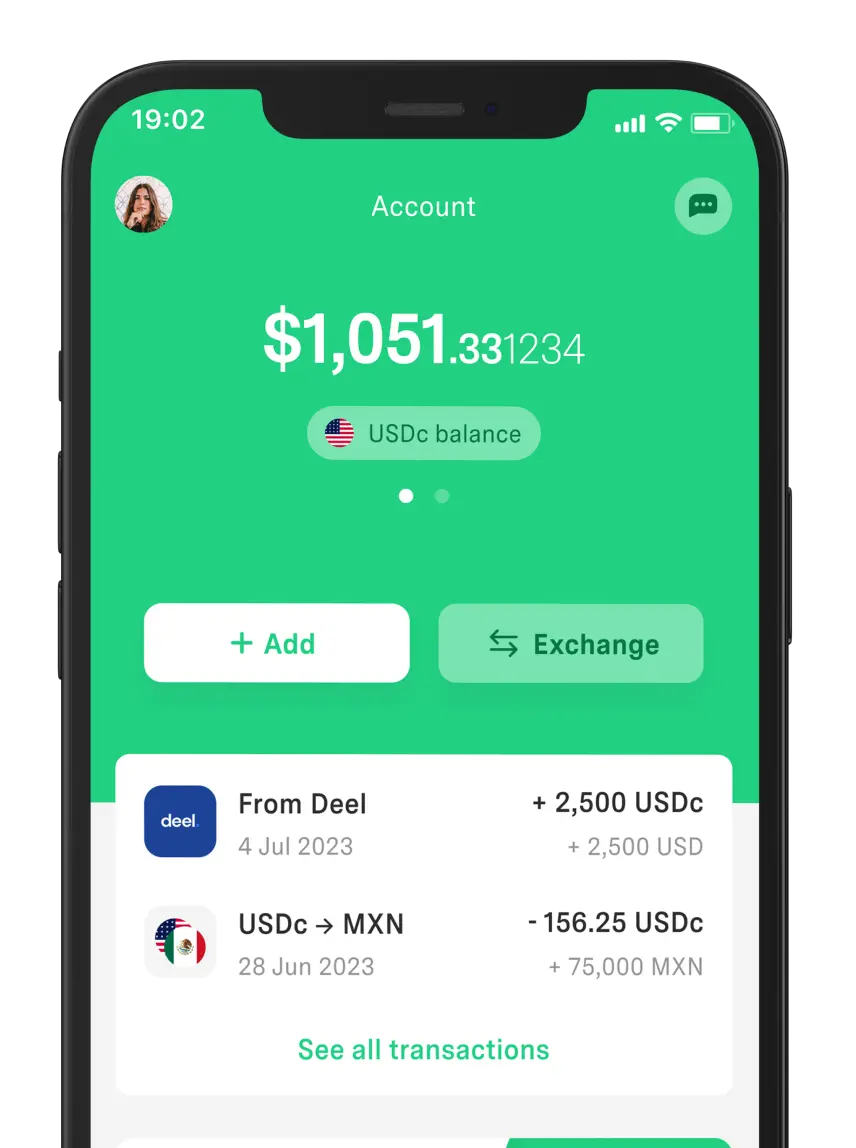 Freelancer tips
Freelancer tips Product Life Cycle: What It Is, Stages, and Examples
Discover what the product life cycle is and how to adapt your marketing strategies to keep a product relevant and profitable.



The cloud on the internet—or cloud computing—is a system that stores your files on external servers accessible over a network. This infrastructure is the standard behind most digital services you use every day.
This ranges from uploading files/photos, saving documents, contacts/notes/calendars, to using apps like DolarApp.
In general, it includes services, platforms, and software that run directly from the cloud—thus transforming how we store information, work, and share data.
For that reason, below we explain what the cloud on the internet is, its types, uses, pros, and cons.
It’s a network of interconnected servers that lets you store, process, and access data online from anywhere. Thanks to this, you can work, share information, or use applications without needing to install anything on your device.
It’s like local storage—the difference is that it doesn’t depend on physical devices (hard drive or USB). Instead, files are hosted in an online space. This ensures constant availability, automatic updates, and greater security against loss or hardware damage.

A few examples?
Services like Dropbox, iCloud Drive, Google Drive, and applications like CapCut and DolarApp. All of them operate thanks to internet cloud infrastructure.
We use the cloud every day—whether to upload a photo, save a document, or send an email. But to better understand what the cloud is and how it lets us access our data, here’s how it works:
You open an app, software, or online application (e.g., Google Drive) from your phone with internet access.
The provider sends your request, which travels to servers located in global data centers where software and information are hosted.
The servers execute tasks, process data, and return results in real time.
Any change is saved immediately and synced across all devices linked to the same account.
Information is stored on multiple servers to ensure backups, continuous availability, and access from anywhere.
The result?
Remote access, real-time syncing, and automatic backups—without depending on your device’s physical storage.
The main types of cloud can be classified by level of access and administration:
Public cloud. Available to anyone over the internet and operates on a pay-as-you-go model. For example, Google Cloud, Amazon Web Services (AWS), and Microsoft Azure, which let you store data, run applications, or use SaaS tools.
Private cloud. Used exclusively by a company or organization. It offers greater control, customization, and security, since all resources and servers are managed internally or by a dedicated provider.
Hybrid cloud. Combines public and private clouds, allowing you to move data and applications between both as needed. It’s common in business environments that use on-premises storage along with cloud services, such as online payment systems.
Each one offers different advantages depending on how it’s used.
Today, cloud services are an essential part of modern digital infrastructure. But like any technology, they offer multiple benefits as well as challenges every user should know.
24/7 remote access. Access your data and apps from any location and device.
Real-time synchronization. Changes you make to a file or project appear instantly across all your devices.
Automatic backup. Information is periodically saved on secure servers—reducing the risk of loss due to failures or human error.
Immediate scalability. You can scale resources up or down based on demand without investing in additional hardware.
Online collaboration. Makes file sharing and simultaneous editing easier, boosting team productivity and the use of remote-work tools.
Pay as you go. Optimizes costs by paying only for the space or services you consume. No over-sized hardware or license purchases.
High availability. Distributed data centers help keep services running almost all the time—even during failures.
Automatic updates. Providers keep software and security measures up to date.
Fast integrations. Allows you to connect different cloud applications or services.
Enhanced security. Data travels encrypted and is protected with authentication and access controls.
Internet dependence. Without internet—or with an unstable connection—cloud work is interrupted or limited.
Security and privacy risks. Even with advanced measures, there’s always the risk of breaches, misconfigurations, or unauthorized access.
Variable costs. Pay-as-you-go can increase expenses if storage consumption or data transfer grows.
Less control over data. You depend on the provider’s policies for data management, location, and deletion.
Complex migration. Moving large data volumes or switching providers can involve costs, time, and compatibility risks.
The cloud itself makes our digital lives and remote work easier—but responsible use is required to unlock its full benefits.
The internet cloud has become part of many everyday activities and the modern work environment.
Below are some of its most common uses:
Take advantage of cloud storage to save, sync, and share files without using physical space on your device.
Some of the best known are:
Google Drive.
Dropbox.
OneDrive.
iCloud Drive.
Mega.
Box.
pCloud.
These run directly in the cloud, enabling teamwork, online document editing, and always-synced information.
Examples:
Google Workspace (Docs, Sheets, Slides, Gmail).
Microsoft 365 (Word, Excel, Teams, Outlook online).
Slack (messaging and collaboration).
Evernote (organization and notes).
Asana (project management).
Google Meet (video calls and meetings).
They run from remote servers, processing and storing financial data in the cloud.
Includes financial platforms like:
Cloud computing provides the technological infrastructure for companies to store, process, and run their own applications in the cloud.
Some of them are:
Google Cloud Platform (GCP).
Amazon Web Services (AWS).
Microsoft Azure.
Oracle Cloud.
Solutions to sign, send, and validate documents digitally:
In short, the internet cloud is present in almost every digital activity we carry out.
The internet cloud is a fundamental piece for working, connecting, sharing information, and managing resources. Thanks to it, we can collaborate in real time, access data, and use advanced tools 24/7 from anywhere.
In an increasingly digital environment, it has also paved the way for new forms of organization and focus. Not only because it supports remote work and flexible hours, but also because it encourages deep work—so you can leverage technology without losing focus or quality.
In essence, the cloud connects, streamlines, and simplifies your digital life—just as DolarApp simplifies your finances.
Send and receive digital dollars or euros securely, quickly, and from anywhere by activating your DolarApp account. Also take advantage of a transparent, competitive exchange rate to buy or sell USDc or EURc.
It’s a technology that lets you store, manage, and process information on external servers connected to the internet, giving you access to your data from anywhere without needing physical space on a device.
There are three main types: public, private, and hybrid. The first is open to all users, the second is used within an organization, and the third combines both for greater flexibility.
Beyond accessing information and applications, saving automatic backups, and collaborating in real time, another advantage is spending less by eliminating the need to maintain physical infrastructure.
Generally, yes—provided you use trusted services. Providers apply encryption, authentication, and backups. Even so, security also depends on good password hygiene and the protective measures you take.
Sources:

Los países tienen fronteras. Tus finanzas, ya no.
 Freelancer tips
Freelancer tips Discover what the product life cycle is and how to adapt your marketing strategies to keep a product relevant and profitable.

 Freelancer tips
Freelancer tips Dive in and discover how sustainable/sustainability-focused technology promotes responsible growth driven by innovation and energy efficiency.


